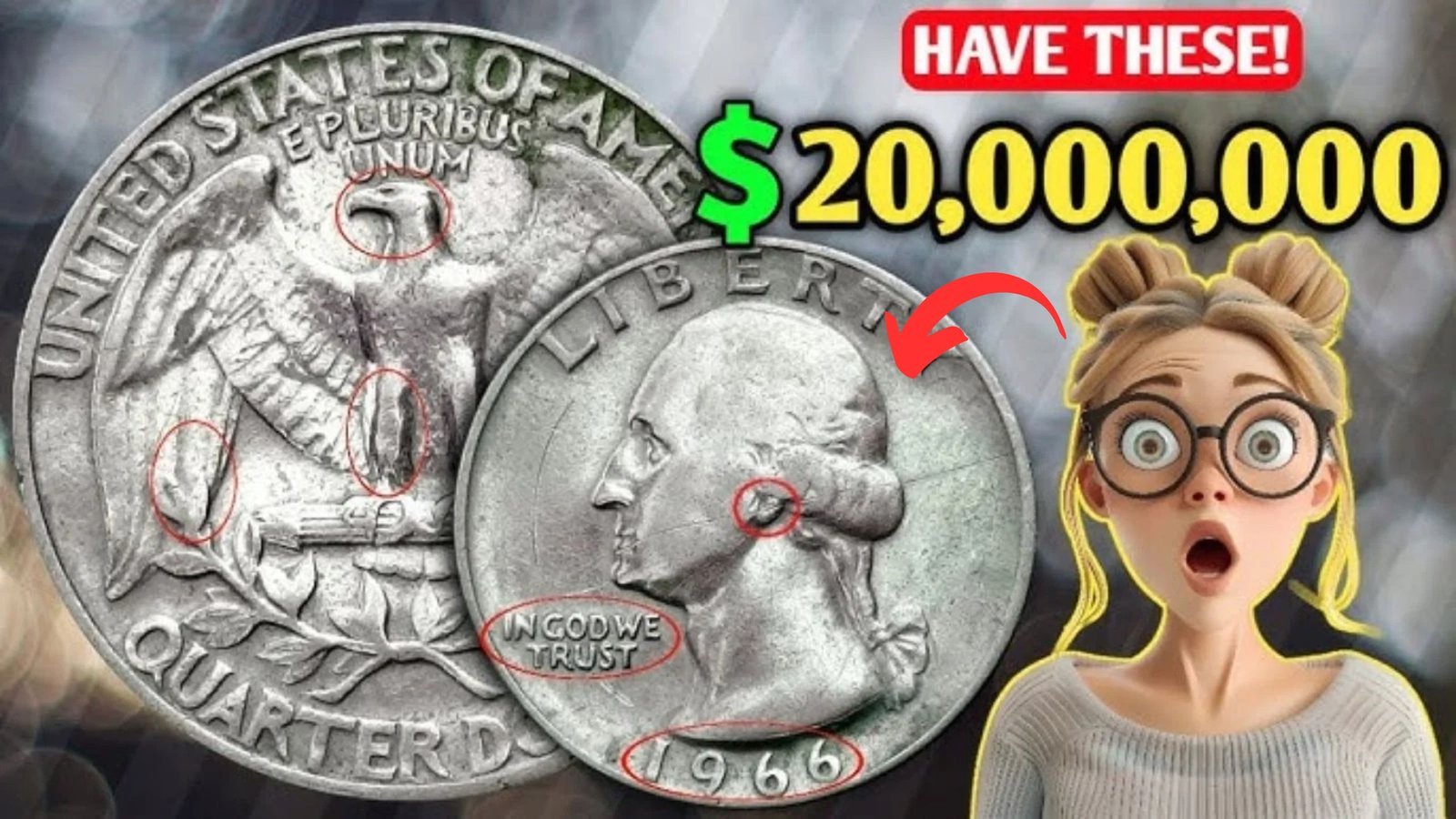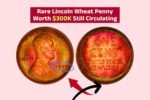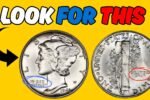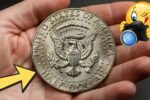Rare 1966 Error Washington Quarter Coin : Could a common-looking quarter in your pocket be worth a life-changing fortune? According to circulating rumors and numismatic speculation, a rare 1966 error Washington quarter could carry an astronomical value of up to $20 million—if the right conditions are met. While that price tag may seem unbelievable, it highlights the fascinating world of coin collecting, where minting mistakes and historical quirks can transform pocket change into priceless treasures.
The 1966 Washington Quarter: What Makes It Special?
At face value, the 1966 Washington quarter isn’t rare. In fact, hundreds of millions were produced that year. But among these ordinary coins, a few extraordinary specimens are believed to have slipped through the cracks—coins with critical minting errors that make them ultra-rare and highly valuable.
What’s notable about 1966? The U.S. Mint was transitioning from silver to copper-nickel clad coinage following the Coinage Act of 1965. During this period, coin production was rushed, mint marks were temporarily removed, and some older planchets (coin blanks) were mistakenly used. This chaotic phase led to a few extraordinary errors.
The $20 Million Question: Is It Real?
Claims of a 1966 quarter worth $20 million stem from unverified but persistent stories in numismatic circles, largely based on the idea of a 1966 quarter mistakenly struck on a silver planchet or possibly even minted with a proof finish during a non-proof year. Some also speculate the existence of double-struck or misaligned die errors from that year, adding fuel to the mystery.
While no 1966 quarter has officially sold for $20 million, extreme value in numismatics often comes down to what someone is willing to pay. A one-of-a-kind, authenticated mint error—especially from a transitional year like 1966—could command a record-breaking auction price if collectors believe it to be the only known example of its kind.
What to Look For: Signs of a Valuable 1966 Quarter
Think you might have a fortune in your change jar? Here’s what to look for when examining a 1966 Washington quarter:
1. Weight
A normal clad quarter from 1966 should weigh about 5.67 grams.
A quarter struck on a silver planchet would weigh closer to 6.25 grams.
Use a precise digital scale to check!
2. Color and Luster
Silver coins have a distinct, soft gray sheen.
Clad coins often show a copper-colored edge. If the edge is solid silver or white, that’s a red flag for a silver planchet.
3. No Mint Mark
All 1966 quarters lack mint marks, as the U.S. Mint suspended them from 1965–1967. So this alone doesn’t indicate a rare find—but it’s consistent with the year in question.
4. Errors to Watch For
Double Die Obverse (DDO): Look for doubling in the lettering, especially “LIBERTY” or “IN GOD WE TRUST.”
Off-Center Strike: Part of the design is missing or shifted.
Wrong Planchet Strike: Silver or foreign-metal planchets used by mistake.
Proof-Like Finish: Highly reflective surface, even though no proof sets were officially made in 1966.
5. Get It Professionally Graded
If you suspect your coin is unusual, submit it to a reputable grading company like PCGS or NGC. They can authenticate and grade it, dramatically increasing its value and trustworthiness.
Have Any Actually Sold?
While no 1966 Washington quarter has yet commanded a public $20 million sale, similar high-profile coins have fetched millions. A rare 1970-S proof quarter struck on a silver Canadian quarter sold for over $35,000. A 1933 Double Eagle gold coin reached nearly $19 million at auction.
If a truly one-of-a-kind 1966 mint error coin were authenticated, a headline-grabbing sale in the multi-million-dollar range is entirely possible.
Frequently Asked Questions (FAQs…)
Q1: Is there really a 1966 Washington quarter worth $20 million?
A: While no 1966 quarter has officially sold for $20 million, rumors in the numismatic world suggest that rare error coins from that year could command extraordinary prices—especially if they are one-of-a-kind, historically significant, and authenticated.
Q2: What makes a 1966 quarter potentially so valuable?
A: The value comes from minting errors such as being struck on a silver planchet, having a double die, being struck off-center, or showing proof-like features from a year when no official proof coins were made.
Q3: What is a silver planchet error?
A: A silver planchet error occurs when a quarter was mistakenly struck using a leftover silver blank instead of the copper-nickel clad planchet. This was more likely to happen during the transition from silver to clad coinage in the mid-1960s.
Final Thoughts: Hidden Wealth in Your Pocket?
The story of the potentially $20 million 1966 Washington quarter is a thrilling reminder that treasures can still be hiding in plain sight. While the odds are slim, the possibility exists—and the excitement of the hunt is half the fun.
So next time you get change at the store or clean out your coin jar, take a second look at your quarters. You never know—your 25 cents could be worth millions.
Would you like a printable collector’s checklist for identifying rare Washington quarters? Or a breakdown of valuable coins from other years? Just let me know!




